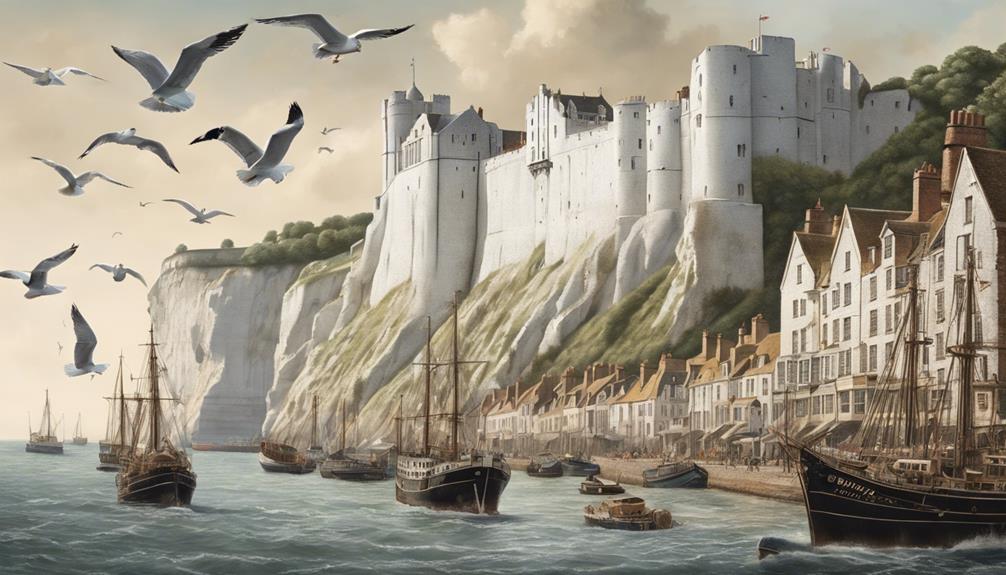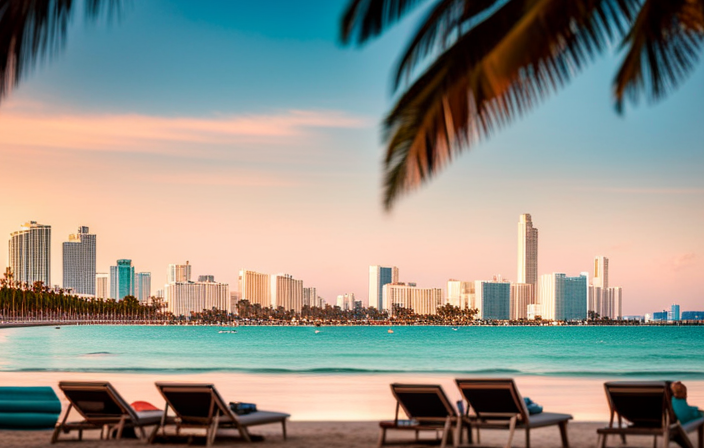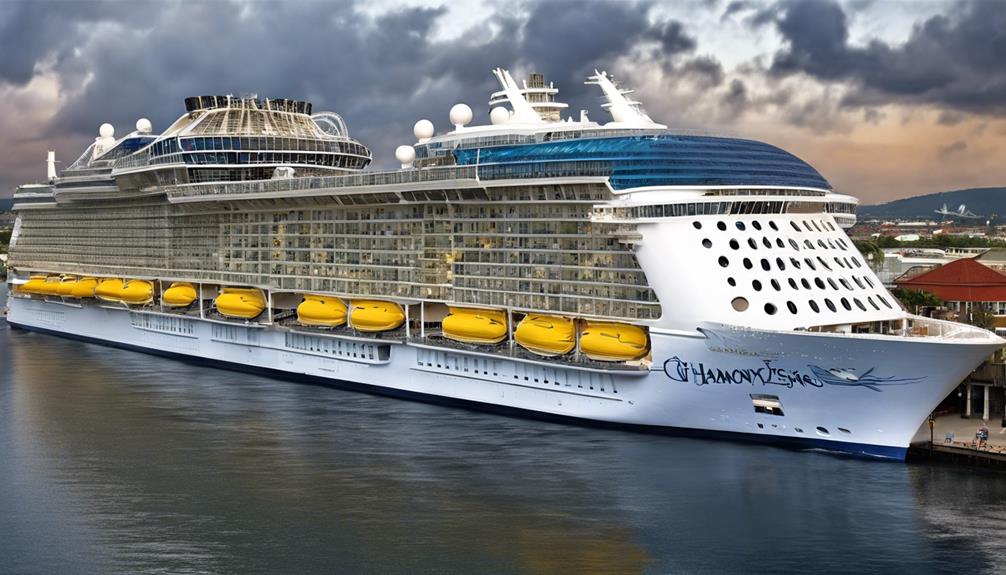Standing before the grand white cliffs that have witnessed centuries of naval history, the Port of Dover beckons us with tales of trade, conflict, and progress.
The layers of time unfold at this strategic gateway, revealing stories etched in its very foundations. From ancient Roman origins to its pivotal role in shaping modern commerce, the Port of Dover's narrative is as complex as it is intriguing.
Join us as we uncover the layers of history and ambition that have shaped this iconic port, offering a glimpse into its enduring legacy and future endeavors.
Key Takeaways
- Port of Dover boasts a historical legacy from Roman times to modern innovations.
- Dover played a pivotal role in World War II, aiding in troop evacuations and military operations.
- Modern facilities offer enhanced travel experiences and stunning views of the White Cliffs.
- Future developments aim to optimize operations, embrace sustainability, and foster economic growth.
Historical Significance of Port of Dover
During its rich history, the Port of Dover has played a pivotal role in shaping the development of trade and transportation across various eras. Dover, nestled against the iconic White Cliffs, has been a beacon for maritime activities since Roman times when it was known as Dubris.
The port's significance continued through the Medieval period, where it thrived as a bustling market town and a strategic cross-Channel travel hub, guarded by a formidable castle. As the Renaissance and Modernization era unfolded, the Port of Dover saw the construction of new docks and warehouses, fostering growth in shipbuilding and brewing industries.
However, it was during World War II that the port truly showcased its importance, serving as a crucial base for naval operations. Despite facing heavy bombings, the Port of Dover stood resilient, being rebuilt to continue its legacy of facilitating trade and serving as a gateway to the world.
Evolution of Dover's Maritime Infrastructure
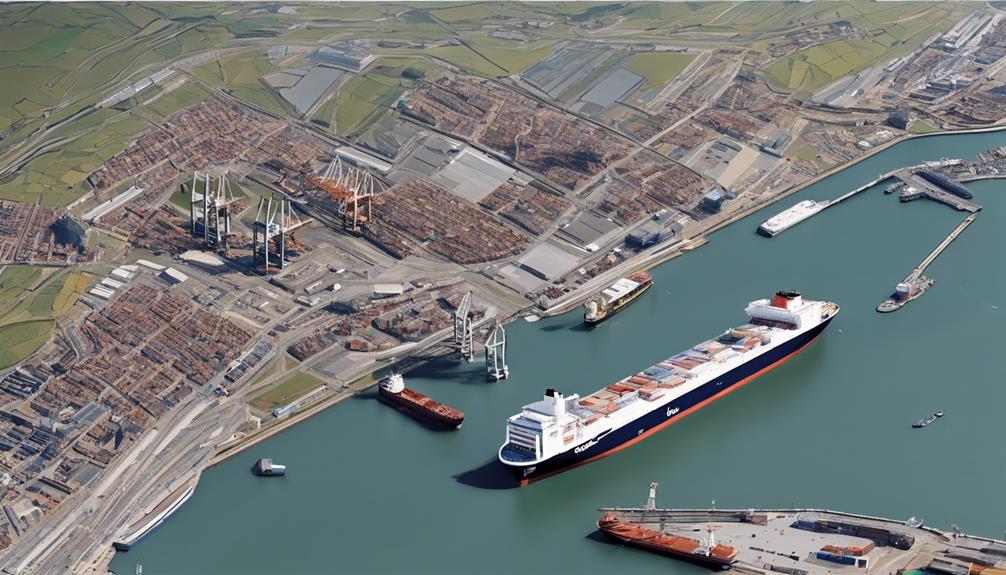
The evolution of Dover's maritime infrastructure showcases a remarkable blend of tradition and innovation, reflecting a commitment to meeting the ever-evolving needs of global trade and connectivity. With two ferry terminals, cargo facilities, and an extensive road network, the port has continually modernized its facilities to stay ahead of industry demands and technological advancements. To ensure smooth operations, security measures such as CCTV, vehicle scanning, and border controls have been implemented.
Playing a vital role in connecting the UK to Europe for trade and tourism, Dover's port significantly contributes to the economy. Looking ahead, future development plans are focused on state-of-the-art infrastructure, operational efficiency, and sustainable growth to maintain its position as a key maritime hub. These plans aim to enhance the port's capabilities and further solidify its importance in facilitating international trade and travel. Dover's commitment to innovation and growth ensures that it remains a crucial link in the global maritime network.
Port of Dover's Role in World War II
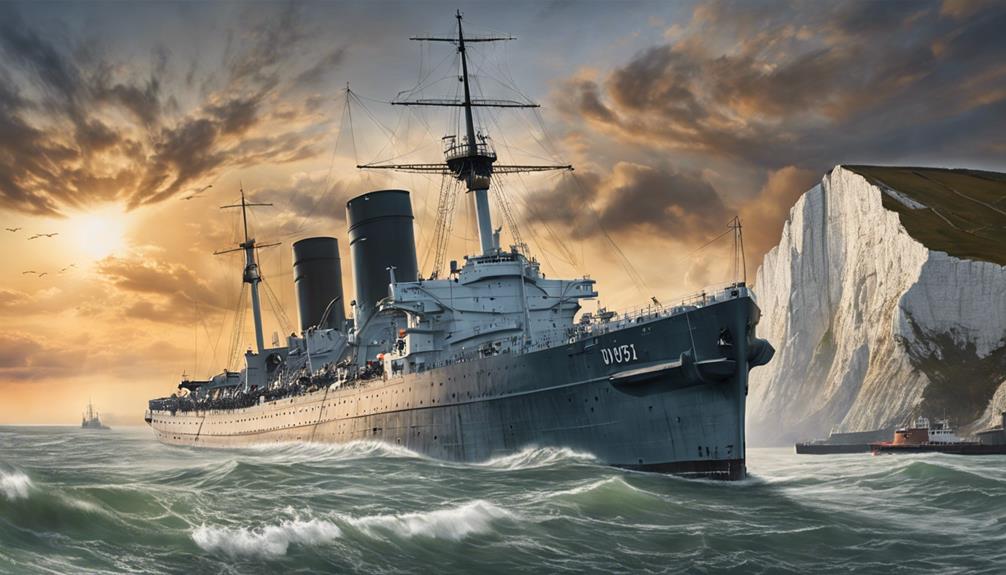
In World War II, the Port of Dover emerged as a pivotal strategic stronghold for British military operations. Situated near the iconic White Cliffs, overlooking the historic Dover Castle, the port played a crucial role in supporting the Allied forces during the conflict. Here are some key points highlighting the significance of the Port of Dover during World War II:
- Evacuation of Dunkirk: The port was heavily involved in the evacuation of troops from Dunkirk in 1940, facilitating the sea crossing that rescued thousands of soldiers.
- Military Operations: Dover served as a key center for military operations due to its proximity to the French coast, enabling swift naval movements.
- Strategic Location: The port's location made it an ideal base for naval operations, contributing to the success of various missions.
- Reconnaissance: Dover's strategic position allowed for effective reconnaissance efforts, aiding in intelligence gathering for the British forces.
- Logistical Support: The port provided essential logistical support for the British navy, ensuring a smooth operation during the war.
Modern-Day Attractions and Activities
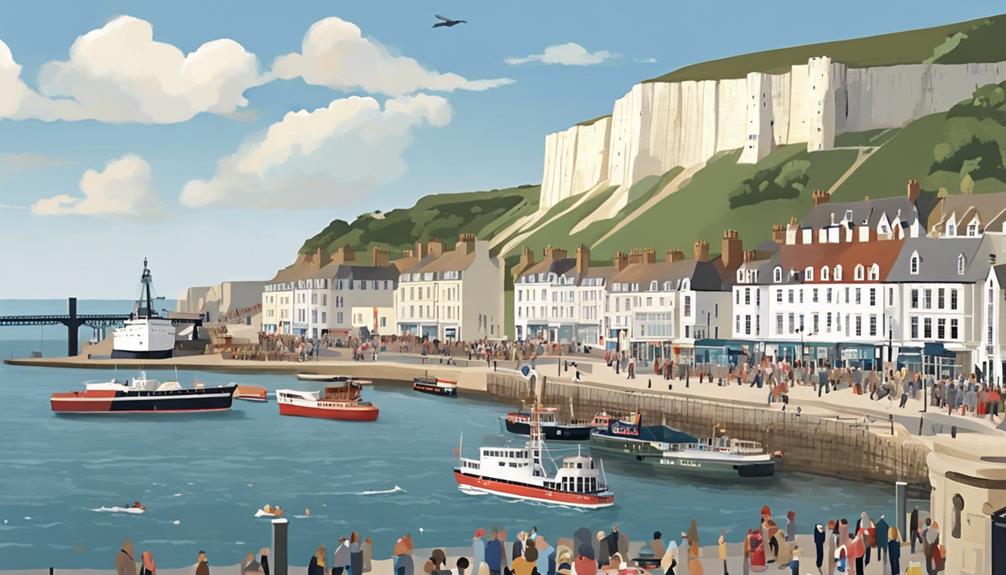
Nestled along the English Channel, visitors to the Port of Dover can immerse themselves in a blend of modern amenities and historical charm. The port boasts modern passenger lounges, upgraded ferry terminals, and new cargo facilities, catering to changing demands and enhancing the travel experience.
One can embark on a guided tour of the terminal building to witness firsthand the port's important role in the UK's trade and tourism industries. Positioned strategically, the port offers stunning views of the famous White Cliffs of Dover, inviting exploration of this iconic natural wonder. In addition, visitors can delve into history by visiting the historic Dover Castle, adding a touch of adventure to their journey.
The port's state-of-the-art infrastructure, including the cruise terminal, ensures a seamless travel experience while maintaining robust security measures like CCTV and vehicle scanning. As a vital hub for cross-Channel travel, the Port of Dover plays a crucial role in connecting the UK with Europe, making it an essential part of the country's economy and overall connectivity.
Future Prospects for Port of Dover
As we look ahead to the future prospects for the Port of Dover, envision a landscape of continuous innovation and growth shaping the next chapter of this vital maritime hub. The Port of Dover is committed to modernizing facilities and staying at the forefront of the industry, ensuring convenient access and sustainability while leveraging its strategic location.
Here's what you can expect in the coming years:
- Terminal Enhancements: The port plans to upgrade its terminals to handle increased traffic efficiently.
- Car Rental Services: Offering on-site car rental facilities to enhance visitors' mobility and convenience.
- Investments in New Technologies: Embracing cutting-edge technologies to streamline operations and reduce environmental impact.
- Focus on Sustainability: Implementing eco-friendly practices to minimize the port's carbon footprint and contribute to a greener future.
- Strategic Location Utilization: Leveraging its strategic position to further enhance trade connections and economic growth in the region.
With these initiatives in place, the Port of Dover is poised to continue its legacy as a pivotal gateway to the UK and beyond.
Frequently Asked Questions
What Is the History of the Port of Dover?
We've explored the rich history of the Port of Dover, from its Roman origins to its strategic significance in Medieval times, through the Industrial Revolution's modernization, and its pivotal role in both World Wars.
What Is the Historical Significance of Dover?
Delving deep into Dover's historical tapestry reveals its resilience and relevance. From Roman roots to wartime valor, Dover's strategic significance in trade and defense has shaped Europe's story, painting a portrait of enduring importance.
Which Cruise Lines Currently Use the Port of Dover?
We cruise with P&O Ferries, DFDS Seaways, Brittany Ferries, Princess Cruises, and Fred. Olsen Cruise Lines departing from the Port of Dover. The port's strategic location connects us to Calais, Dunkirk, and beyond for exciting adventures.
Who Owns the Port of Dover?
We, the community, are excited to share that the Port of Dover is owned by the Dover Harbour Board, a trust port established in 1606. This ownership structure allows for independent operation, long-term planning, and strategic development.
Conclusion
So, as we wrap up our exploration of the Port of Dover, we can't help but marvel at its rich history and exciting future.
From Roman conquests to modern-day trade, this port has seen it all.
And with plans for further development on the horizon, we can only imagine the heights it will reach.
So here's to the Port of Dover – may it continue to sail through history with all the pomp and splendor of a grand cruise liner!

